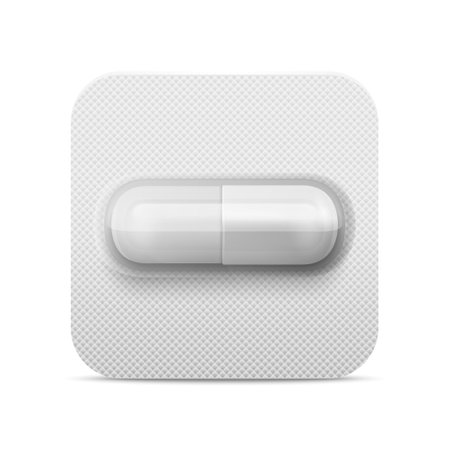1. Understanding Cold and Warm Compresses
Cold and warm compresses are simple, at-home remedies that can make a big difference when it comes to managing pain, reducing swelling, and promoting healing. Knowing when to use each one is key to getting the best results.
What Is a Cold Compress?
A cold compress is typically an ice pack, a bag of frozen vegetables wrapped in a towel, or a commercial cold gel pack. It works by lowering the temperature of the affected area, which helps reduce inflammation and numb pain.
Common Uses for Cold Compresses:
- Minor sprains or strains
- Swelling from injuries
- Bruises
- Headaches or migraines
- Minor burns (after initial cooling with water)
What Is a Warm Compress?
A warm compress can be a heated towel, a microwaveable heat pack, or a warm water bottle. Heat therapy helps relax muscles, stimulate blood flow, and ease stiffness in joints and tissues.
Common Uses for Warm Compresses:
- Muscle soreness or stiffness
- Chronic pain (like arthritis)
- Tight joints or muscle spasms
- Menstrual cramps
- Sinus congestion
Quick Comparison Table
| Type of Compress | Main Function | Best For |
|---|---|---|
| Cold Compress | Reduces inflammation and numbs pain | Acute injuries, swelling, bruising, headaches |
| Warm Compress | Relaxes muscles and improves circulation | Chronic pain, muscle tension, cramps, sinus issues |
The right compress can provide relief quickly and naturally without medication. The key is knowing whether your condition calls for cold or heat—and using it safely.
2. When to Use a Cold Compress
Cold compresses are a simple yet effective way to manage pain and inflammation, especially during the early stages of an injury. Knowing when to use a cold compress can help speed up recovery and provide immediate relief from discomfort.
What Is a Cold Compress?
A cold compress is typically a cloth or gel pack thats been chilled or frozen and applied to the skin. The cold temperature helps constrict blood vessels, which reduces blood flow to the affected area. This in turn minimizes swelling and numbs sharp pain.
Best Situations for Using a Cold Compress
You should reach for a cold compress when dealing with acute injuries or conditions that involve sudden pain or swelling. Here are some common scenarios where cold therapy can help:
| Condition | How Cold Compress Helps |
|---|---|
| Sprains and Strains | Reduces swelling and eases pain by slowing down blood flow to the area. |
| Bruises | Minimizes discoloration and inflammation by constricting blood vessels under the skin. |
| Minor Burns (First-degree only) | Soothe the skin and reduce heat; should be used only during initial minutes after the burn. |
| Post-Surgical Swelling | Helps control inflammation in the first 48 hours after minor procedures like dermal fillers or Botox. |
| Migraine or Headache Relief | Numbs the pain and may reduce blood flow around the head to ease tension. |
| Fever Management | Cools down body temperature when placed on the forehead or back of the neck. |
How to Use a Cold Compress Safely
- Timing: Apply for 15-20 minutes at a time, with at least a 1-hour break between applications.
- Protection: Always wrap the ice pack or frozen item in a towel to prevent frostbite or skin irritation.
- Frequency: Use during the first 24 to 48 hours after injury for best results.
- Avoid Direct Contact: Never place ice directly on bare skin.
Quick Tip:
If youre using a bag of frozen peas as a makeshift compress, make sure its sealed tightly and covered with a thin cloth before applying it to your skin.

3. When to Use a Warm Compress
Warm compresses are a go-to remedy for many people dealing with chronic discomfort or stiffness. Unlike cold compresses that help with fresh injuries and swelling, warm compresses are best used when you want to relax muscles, increase blood flow, or ease long-term aches. They work by opening up blood vessels, which helps bring more oxygen and nutrients to sore areas, speeding up the healing process.
Common Situations Where a Warm Compress Helps
If youre wondering when to reach for a warm compress instead of a cold one, here are some common situations where warmth makes all the difference:
| Condition | Why a Warm Compress Works |
|---|---|
| Muscle Tension or Spasms | Heat helps relax tight muscles and reduce spasms after exercise or stress. |
| Chronic Pain (e.g., arthritis) | Warmth improves circulation and soothes joints, especially in the morning. |
| Stiff Neck or Shoulders | A warm compress can loosen stiff areas caused by poor posture or sleeping positions. |
| Menstrual Cramps | Applying heat to the lower abdomen eases cramping by relaxing uterine muscles. |
| Sinus Congestion | A warm towel over the face helps open nasal passages and relieve pressure. |
How to Use a Warm Compress Safely
You can make a warm compress at home using a damp towel heated in the microwave or use store-bought heating pads. No matter what method you choose, keep these safety tips in mind:
- Check the temperature: Make sure it’s warm, not hot, to avoid burns.
- Use for 15–20 minutes: That’s usually enough time to get relief without overheating your skin.
- Avoid open wounds: Never apply heat directly to cuts, bruises, or inflamed skin.
- Use a barrier: Wrap heating pads in a cloth if they feel too hot on direct contact.
Good Times to Apply Warm Compresses
The best time to use a warm compress is before activity if youre dealing with stiffness—like before your morning walk if you have arthritis—or after activity if your muscles feel tight. Its also great during colder months when joints tend to feel more rigid.
A Quick Comparison: Cold vs. Warm Compress Use Cases
| Cold Compress | Warm Compress |
|---|---|
| New injuries (within 48 hours) | Chronic pain or stiffness |
| Swelling and inflammation | Tight or sore muscles |
| Bumps and bruises | Pain relief for arthritis |
| Numbing sharp pain | Relieving menstrual cramps or sinus pressure |
Knowing when to use a warm compress can make everyday aches much more manageable. Whether it’s muscle tension from sitting too long or chronic joint pain, applying gentle heat may be just what your body needs.
4. How to Properly Apply a Compress
Using a cold or warm compress the right way can make a big difference in how effective it is. Below, you’ll find easy step-by-step instructions for safely applying both types of compresses, along with tips on timing and safety precautions.
Cold Compress: Step-by-Step Guide
When to Use:
Cold compresses are best for recent injuries, swelling, bruising, or inflammation — think sprains, strains, or even migraines.
How to Apply:
- Prepare the compress: Use a cold gel pack, a bag of frozen vegetables, or ice wrapped in a thin towel. Never apply ice directly to the skin.
- Apply to affected area: Place the compress gently on the injured or sore area.
- Time it: Keep it on for 15–20 minutes at a time.
- Take breaks: Wait at least 1 hour before reapplying to avoid skin damage.
Safety Tips:
- Always use a barrier like cloth or towel between the ice and your skin.
- If you notice numbness, remove the compress immediately.
Warm Compress: Step-by-Step Guide
When to Use:
Warm compresses help with muscle tension, stiffness, chronic pain, and menstrual cramps. They’re also useful for promoting circulation and relaxing tissues.
How to Apply:
- Prepare the compress: Use a warm towel, heating pad (on low setting), or microwavable heat pack. Ensure its warm but not hot enough to burn the skin.
- Apply to affected area: Gently place the warm compress on the area needing relief.
- Time it: Leave it on for 15–20 minutes per session.
- Repeat if needed: You can use warm compresses several times a day as long as your skin tolerates it well.
Safety Tips:
- Avoid using heat on open wounds or areas with poor circulation unless directed by a healthcare provider.
- If it feels too hot or causes redness, remove immediately and let your skin cool down.
Quick Comparison Table
| Cold Compress | Warm Compress | |
|---|---|---|
| Main Purpose | Reduce inflammation and numb pain | Relax muscles and improve blood flow |
| Best For | Acute injuries, swelling, headaches | Sore muscles, stiffness, chronic pain |
| Duration | 15–20 mins every 1–2 hours | 15–20 mins multiple times daily |
| Safety Tip | Avoid direct contact with skin | Avoid overheating or burning skin |
The key to getting the most out of cold and warm compresses is using them correctly. Always follow safety guidelines and listen to your body’s response during treatment.
5. Common Mistakes to Avoid
Using cold and warm compresses can be a simple yet effective way to relieve pain, swelling, or stiffness. However, there are some common mistakes people make that can reduce the benefits—or even cause harm. Here’s what you should watch out for:
Overusing Cold or Warm Compresses
One of the most frequent errors is using compresses for too long or too often. While it might seem like more is better, overuse can actually delay healing or irritate the skin.
| Compress Type | Recommended Duration | Frequency |
|---|---|---|
| Cold Compress | 15–20 minutes per session | Every 1–2 hours as needed (within first 48 hours after injury) |
| Warm Compress | 15–20 minutes per session | Up to 3 times daily |
Using the Wrong Temperature
A compress thats too cold or too hot can damage your skin. Always test the temperature before applying it directly to your body.
- Cold Compress: Should feel cool but not freezing. Avoid using ice packs directly on skin—wrap them in a thin cloth or towel.
- Warm Compress: Should be warm, not hot. If it feels like it could burn, it’s too hot.
Applying Directly to Broken Skin
Never apply a compress—especially a warm one—directly over open wounds, cuts, or rashes unless specifically instructed by a healthcare provider. This can increase risk of infection or worsen irritation.
Not Knowing When to Switch Methods
The timing of switching from cold to warm therapy matters. Use cold compresses first (usually within the first 48 hours after injury) to reduce swelling, then switch to warm compresses later to promote blood flow and relax muscles.
When to Use What
| Condition | Cold Compress | Warm Compress |
|---|---|---|
| Acute Injury (within 48 hrs) | ✅ Recommended | ❌ Not recommended |
| Chronic Muscle Pain or Stiffness | ❌ Not helpful | ✅ Recommended |
Ignoring Signs That Need Medical Attention
If symptoms persist beyond a few days, get worse, or you notice signs of infection (like redness, warmth, pus, or fever), don’t rely solely on home remedies. It’s time to see a healthcare professional.
- Pain that doesnt improve with rest and compresses
- Numbness or tingling in the area being treated
- A visible deformity after an injury (possible fracture)
Avoiding these mistakes can help you get the most benefit from using cold and warm compresses safely and effectively.


